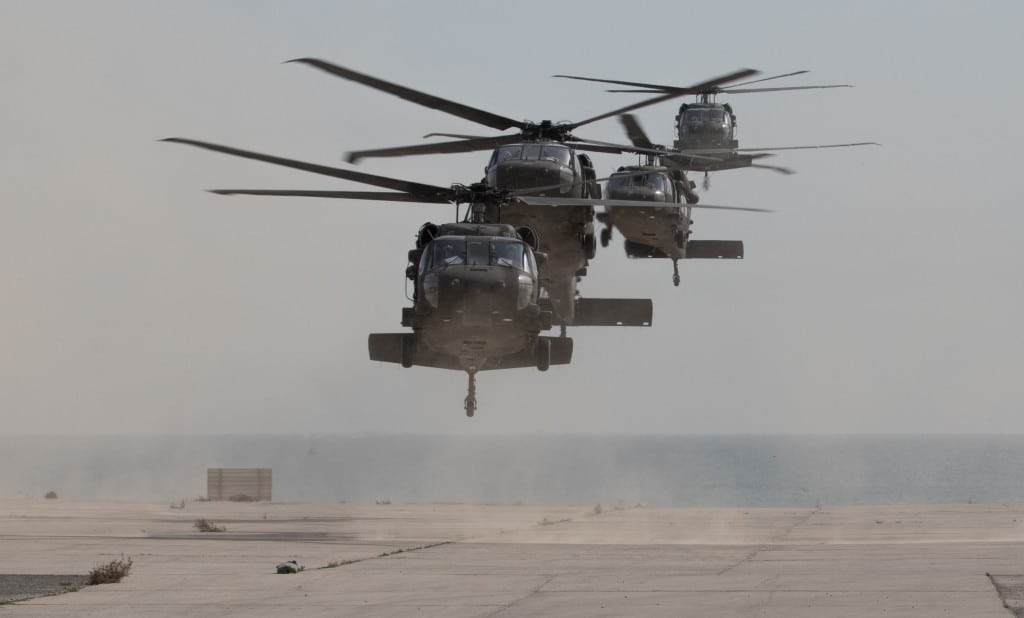
UH-60 Black Hawk helicopters carrying distinguished visitors arrive for Army Day 2018, Feb. 9, 2018, Kuwait Naval Base, Kuwait. (U.S. Army photo by Sgt. 1st Class Ty McNeeley, U.S. ARCENT PAO)
Sikorsky is nearing completion of the first UH-60 outfitted with an aftermarket robotic copilot kit that can help plan and execute missions in concert with a pilot either in the cockpit or remotely managing the aircraft.
The optionally piloted Black Hawk should fly by the end of the year, marking the culmination of about a decade of work by the company, the US Army and the Defense Advanced Research Projects Agency (DARPA) to automate a full-sized legacy rotorcraft.
“The significant thing about this aircraft is we have now developed a full retrofit kit,” said Igor Cherepinsky, chief engineer of autonomy systems at Sikorsky, now owned by Lockheed Martin,in a recent interview. “Unlike the previous iterations, where they were experiments – they were obviously good experiments, but nevertheless experiments, but this one is a product prototype.”
Sikorsky has taken a conventional UH-60A and installed fly-by-wire flight controls and supervised autonomy that includes degraded visual environment mitigation and other technologies. The aircraft is nearly complete and going through ground check in preparation for flying later this year. Ground runs should begin sometime after Oct. 1 followed by demonstration and flight testing. The Army also plans to build its own experimental Black Hawk using the technology in preparation for potentially fielding it to the entire legacy UH-60 fleet.
“We are now looking at how we produce this into the fleet in a very short period of time,” he said. “This isn’t an experiment anymore. This is a prototype.”
Sikorsky already has demonstrated various autonomous technologies on the UH-60, but those early flights were more proofs of concepts for the technology and concept of operations. Those flights showed more primitive versions of fly-by-wire controls and autonomy but had nowhere near the external sensing or artificial intelligence as the aircraft now being readied for flight test, Cherepinsky said.
“The key with this technology is that the autonomy is less flying the aircraft than performing the duties of a co-pilot,” he said. “It is a much tighter coupling where the human being may be wherever … and don’t just think cockpit — ether upfront, in the cabin or remote from the ground or in another vehicle.”
Using the Sikorsky Autonomous Research Aircraft — a customized S-76B — company and government engineers have demonstrated how the autonomous retrofit kit can takeover basic planning and mission tasks from a pilot in the cockpit.
Read the full article on Rotor & Wing International, a sister publication to Avionics.